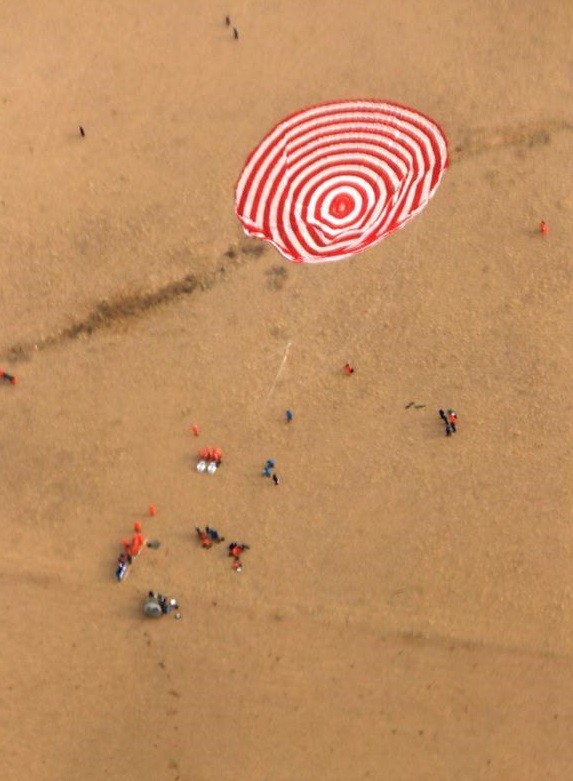By Ana Verayo, | November 18, 2016

The return capsule of China's Shenzhou-11 spacecraft lands successfully in north China's Inner Mongolia Autonomous Region. (China Manned Space Program)
Two Chinese astronauts have returned to Earth on Friday after staying for a month in space, aboard a Chinese space station. This is China's longest manned mission as part of the nation's ambitious space programs.
Like Us on Facebook
This crew consists of mission commander Jing Haipeng and Chen Dong. The astronauts landed on the steppes of Inner Mongolia. The astronauts are reported to be in good health. They landed safely and emerged from the Shenzhou 11 spacecraft.
The astronauts stayed for 30 days on the new Tiangong 2 space station where they tested equipment and carried out experiments to prepare for the arrival of the orbiting space laboratory's main module in 2018. Starting from this mission, China aims to house a permanent crew aboard the Tiangong 2 for six years.
According to a congratulatory message from the Communist Party's Central Committee to the astronauts, this successful mission indicates that China's manned space program has achieved new progress in the bid to make the country a world power in science, technology, and innovation.
China launched its first human mission 13 years ago and also operated two space stations, successfully completed a spacewalk, and even landed a rover on the moon. The country is now planning for a manned lunar mission.
The Tiangong (or "Heavenly Palace") space stations are also a major step in the preparing China's first crew to Mars before 2020. Tiangong 1 stopped operations in early January this year and is now free-wheeling in space. It is expected to burn up in the atmosphere upon re-entry into the Earth next year.
China is also planning to host an international space station by financing other nations' missions aboard the Tiangong 2. Still, the Chinese space station will be smaller at 60 tons, while the International Space Station is around 420 tons.
The Tiangong 2 space station is currently located almost 250 miles above Earth in lower orbit. It was launched on September 15.
From the space flight control center in Beijing, Vice Premier Zhao Gaoli said that this newest achievement marks China's climb towards the peak of the world in terms of technology.
-
Use of Coronavirus Pandemic Drones Raises Privacy Concerns: Drones Spread Fear, Local Officials Say

-
Coronavirus Hampers The Delivery Of Lockheed Martin F-35 Stealth Fighters For 2020

-
Instagram Speeds Up Plans to Add Account Memorialization Feature Due to COVID-19 Deaths

-
NASA: Perseverance Plans to Bring 'Mars Rock' to Earth in 2031

-
600 Dead And 3,000 In The Hospital as Iranians Believed Drinking High-Concentrations of Alcohol Can Cure The Coronavirus

-
600 Dead And 3,000 In The Hospital as Iranians Believed Drinking High-Concentrations of Alcohol Can Cure The Coronavirus

-
COVID-19: Doctors, Nurses Use Virtual Reality to Learn New Skills in Treating Coronavirus Patients







